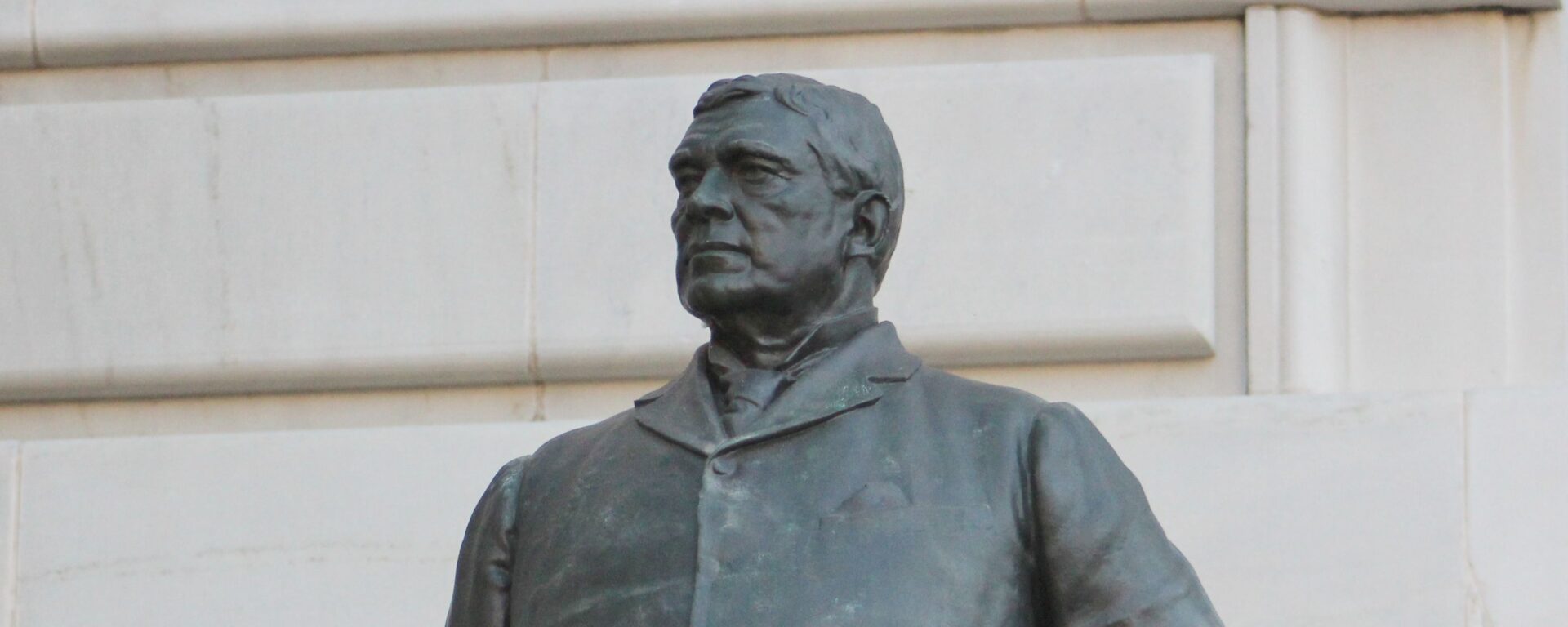“Washington itself is a memorial to his worth.”
Standing in the shadow of the John A. Wilson Building (the municipal offices of Washington, D.C.) is the statue of Alexander Robey Shepherd. Although it is passed by hundreds of pedestrians and drivers daily, few realize the significance of the man whose legacy looms over the entire District.

Shepherd’s statue was the first in D.C. to honor someone who was born in D.C. Hundreds of people attended the dedication ceremony in May 1909, including many municipal and congressional leaders –including Joseph Gurney Cannon, the most powerful Speaker of the House ever (and on the cover of the first issue of Time Magazine); Colonel Spencer Cosby, who oversaw construction of the Oval Office and the planting of the Japanese cherry trees; and John W. Foster, former Secretary of State and grandfather to John Foster Dulles.
The statue was sculpted by Canadian-born artist Ulric Stonewall Jackson Dunbar. The statue of Shepherd was one of the first in D.C. of a civic leader and one of the first to be wearing a suit. Its left hand is closed behind its back while in the right hand is a map of Washington, D.C. Dunbar’s works can be found in the Senate chambers, the Corcoran Gallery, and the Smithsonian Museum of Natural History. His subjects include Presidents Martin Van Buren and Warren G. Harding, Chief Sitting Bull, and American Red Cross founder Clara Barton.

Shepherd entered the workforce at age 13 as a plumber’s assistant. He would go on to buy that company and begin to invest his profits in real estate, becoming a wealthy socialite in the process. He enlisted in the Union army after the Civil War broke out and served as a member of city council from 1861 to 1871. He worked to emancipate District slaves before the 13th Amendment was passed and worked for their suffrage afterward.

In 1871 Congress passed the Organic Act. Shepherd had advocated for the passage of this bill, which merged all of the District into a single municipality, whereas Georgetown and Washington had previously been separate political entities. Over the next three years Shepherd worked behind the scenes – and briefly at the head of D.C. government – to transform the city. He filled in the open sewers and canal, leveled and paved the streets, installed street lights, planted over 60,000 trees, and started the city’s first public transportation system.

But by 1874 his administration was audited by Congress, which found that the District was $13 million in debt (over $258 million today). Shepherd wasn’t found guilty of breaking any laws, but he was stripped of political power and by 1876 he was personally bankrupt. He moved his family to Mexico in 1880, where he would unsuccessfully attempt to remake his fortune. By the time of his death 22 years later in Mexico, Shepherd was already remembered as the man who had remade Washington. Before his drastic changes to the city, Congress had been contemplating moving the capitol further west, but with Shepherd’s improvements, the idea was never seriously discussed again.

Resources used for this article:
https://en.wikipedia.org/wiki/Alexander_Robey_Shepherd_(Dunbar)
https://en.wikipedia.org/wiki/Alexander_Robey_Shepherd
http://chroniclingamerica.loc.gov/lccn/sn83045462/1909-05-04/ed-1/seq-11/
